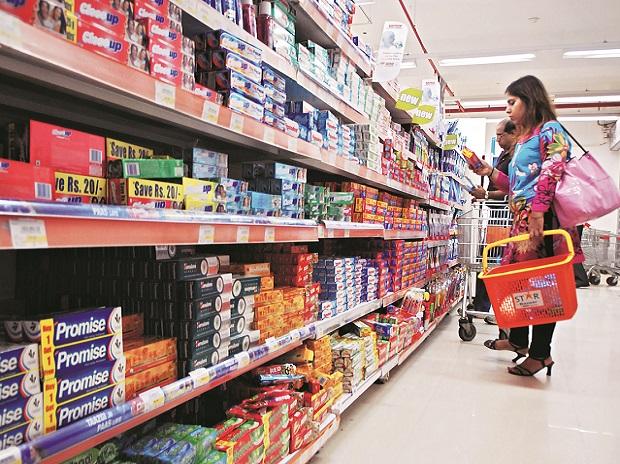
FMCG industry gradually getting up to speed, experiencing a growth of 7.3% during the October-December period.
The Traditional trade channels had faced severe competition from the e-commerce sites as the consumption levels on those sites are much higher than in the pre-pandemic era. With the evolution in trends, people are shifting their focus towards online platforms for buying goods and services.
The e-commerce sector is becoming more prominent in the metro markets as the traditional trade channels consolidated their share in the metropolitan cities. The way of conducting business activities has played a crucial part in transforming the consumer’s mind to explore the aspects and benefits of the digital setup established via e-commerce.
Experiencing loss during the coronavirus pandemic the traditional trade channels established a growth momentum during December( 8 percent vs last year), and the September quarter clocked a growth at the rate of 3 percent, hence making a step up in the road to recovery to smooth working of the economic activities.
During the festive period, there was an upturn in the flow of business activities, which increased the sale of goods and services, resulting in the growth of the FMCG industry during the October-December quarter by 7.3 percent.

After facing severe concerns during the lockdown, there was displeasure within the FMCG industry about the inactivity that caused vulnerabilities and doubts among people, but the industry saw a bounce back when the situation improved for good.
Ending the quarter on a high note was signaled to be satisfactory as Rural India, which is outshining others extremely well, showcasing a double-digit growth during the period under review. The metropolitan markets affirmed that it emerged as the key to “significant recovery observing consumption-led growth,”
The Indian customers have witnessed a troublesome year, but the last few months of 2020 saw the economic activities surge their way back to the new normal as the consumption increased after the opening of the lockdown to generate more revenue.
“The festive season brought a further boost to the sentiments and since then there has been a visible uptick in growth for the industry resulting in an increase in consumption across staples, and home and personal care,” said NielsenIQ Lead, Retail Intelligence, India Diptanshu Ray.
Comparatively, Rural India faced fewer consequences during the pandemic, and the road to sharp recovery was much straightforward due to the efficient agricultural sector performance, as well as government efforts towards rural employment generation;
The end of the last quarter of 2020 improved in many aspects in correspondence with how the year had been, it was determined to uplift the economic stagnation into a boosting framework of welfare activities.
Products from the health sector, such as liquid toilet soap, antiseptic liquid, floor cleaner, toilet cleaner, perceived a high-value growth of about 46 percent in comparison to last year’s pursuit.
The Indian metropolitan cities comprise about a million of the country’s population, being negatively affected saw the emergence of a positive growth zone and delineated up to almost 0.8% in the surplus from the previous year.
While rural markets look to offload their stock and increase their sales, the potency of growth keeps on gradually inflating to the next level. The markets strengthen their development due to, to which there is a whooping acceleration into double digits, almost 3.6% positive movement between the two quarters.
The trends after the pandemic have evolved into a more digital-centric approach as most of the work nowadays is happening through online platforms.
E-commerce has become a vital source for much of the business network, as products from a large geographical area could be present under one roof.

The large manufacturers under FMCG whose annual turnover exceeded the figure of Rs. 100 crores, benefited from the reopening of the industries as it led to consumption-based growth for longer periods than expected.
The whole committee of the small-scale business continued to exhibit growth in double-digit figures following the help of various government policies. During the December quarter, the growth was noteworthy by approximately 16 percent.
Food and the health-care sector were the two priorities during the lockdown, as it was considered under the categories of necessities.
Only two sectors that maintained a bit of a threshold the economy, diversified in many areas from the others, but played an immense part in reassuring the continuous positive flow of the Indian markets. The staple food increased by almost 18 percent Vs a year ago, observing an increase for 3 consecutive quarters in a row.
Government policies were enforced in such a subtle form that the economic crisis was bound to improve after the reopening of the industries across the nation, and the dissemination of industries helped in gaining a positive response around the world.
In 2020, industries including the FMCG had an undervalued decline in growth by 2 percent which affected the small production houses and were forced to shut down as they could not get enough funds for capital maintenance purposes.
Lately, the festive period was seen as a hope of enlightenment in enhancing the business activities in India, after suffering hazardous situations during the initial phase of the coronavirus epidemic.
The smooth and systematic working of the industries is only possible if the interests of all the sectors move in one direction, and they work for the upliftment of the Indian economy.
Recently, trends are changing, and so are the working techniques of individuals. The electronic sectors including transport, e-commerce have developed their way of working in a particular way which is providing them beneficial results as they continue to outshine in this competitive world.
The contribution of Rural people in the economic growth plays a crucial role in setting new goals for each quarter and achieving them by consistency and resilience in doing smart work and earning higher profits for the current financial year.
The FMCG industry is set to overlook the bizarre moments and regain its position in the Indian economy.





